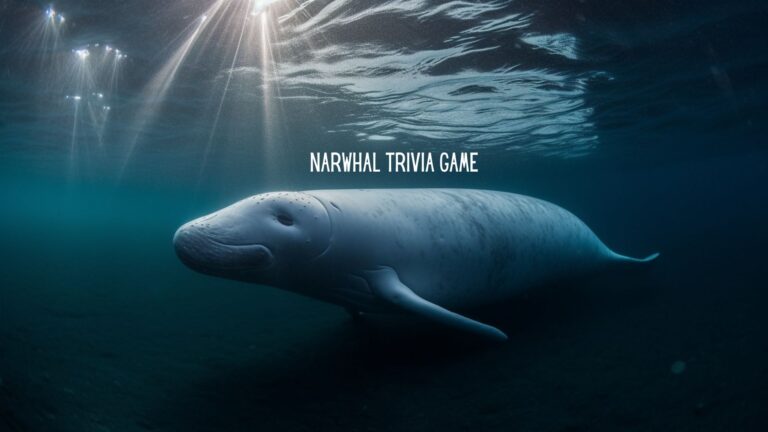The Blue Whale Challenge: A Trivia Quest with the Ocean’s Behemoth
The blue whale (Balaenoptera musculus) is a marvel of the natural world, holding the title as the largest animal ever known to have existed. This majestic marine mammal’s sheer size, intriguing behavior, and hauntingly beautiful songs have long fascinated scientists and ocean lovers.
Physical Characteristics
The blue whale is truly enormous, with adults reaching lengths of up to 100 feet and weighing as much as 200 tons. Their heart alone can weigh as much as a small car!
Habitat
Blue whales are found in all the world’s oceans, from the icy waters of the Arctic and Antarctic to tropical and temperate seas.
Diet
Blue whales primarily feed on tiny shrimp-like creatures called krill. During feeding season, an adult blue whale can consume up to 4 tons of krill in a single day.
Behavior
Blue whales are mostly solitary creatures but can be seen in small groups, particularly during feeding. They communicate using low-frequency sounds, including moans and pulses, some of which can be heard hundreds of miles away.
Question 1: What is the scientific name of the blue whale?

Answer 1: Balaenoptera musculus
Question 2: How long can blue whales grow?

Answer 2: Up to 100 feet
Question 3: What do blue whales primarily feed on?

Answer 3: Krill
Question 4: How much can a blue whale’s heart weigh?

Answer 4: As much as a small car
Question 5: What is the conservation status of blue whales?

Answer 5: Endangered
Question 6: How do blue whales communicate?

Answer 6: Using low-frequency sounds, including moans and pulses
Question 7: Where are blue whales found?

Answer 7: In all the world’s oceans
Question 8: What are the main threats to blue whales?

Answer 8: Ship strikes, entanglement in fishing gear, pollution, and climate change
Question 9: How much krill can an adult blue whale consume in a single day during feeding season?

Answer 9: Up to 4 tons
Question 10: What method do blue whales use to feed on krill?

Answer 10: Filter-feeding using baleen plates
Whale Trivia Questions & Answers Game













